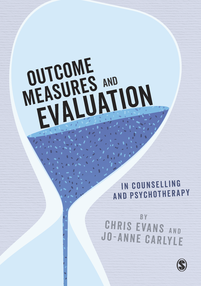Created for original site 1/1/2015, last updated 27/3/20, page author CE, licence: Attribution 4.0 International (CC BY 4.0) .
From the outset we realised that scores on outcome measures, self-report or rated, must be considered in context and that this makes it vital to have some common core of contextual information.
The CORE-A was the first part of this CORE contextual information framework. It comprises four sides of A4 completed by the practitioner divided into the Therapy Asessment Form (TAF), described here, completed at first session or at the end of assessment where assessment takes more than one session. The second part is the End of Therapy (EoT) form completed … at the end of therapy!
The TAF covers demographics, practicalities of the referral, relationships/support/dependents, current and previous therapies/help, medication, reason for referral, problem areas which are rated for both severity and duration, risk, positive and negative coping strategies, and the outcome of the assessment.
Referencing the CORE-A
As the CORE-A is mainly a context information gathering form completed by practitioners, not a self-report psychometric measure, and as most of the items will have great face validity and inter-rater reliability, there is no conventional psychometric exploration of the instrument and no clear first publication that describes it in great detail. Probably the first fairly detailed use of information from the CORE-A was in:
Evans, C., Connell, J., Barkham, M., Marshall, C., & Mellor-Clark, J. (2003). Practice-Based Evidence: benchmarking NHS primary care counselling services at national and local levels. Clinical Psychology & Psychotherapy, 10, 374–388. http://doi.org/10.1002/cpp.384.
Translation/localisation of the CORE-A
Translation of either part of the CORE-A is not the challenge of translating the self-report measures so our translation standards don’t apply to the CORE-A but the legalities do: you must contact me (CE) and discuss things if you want to translate the CORE-A. We do require that you translate both parts and all the blocks of each, even if we are going to agree that you don’t want to use some blocks locally. The main challenge is really of localisation as a number of variables, mainly on the CORE-EoT, have to be adapted to the locality. Typically the breakdown of ethnicity and of previous service use need careful thought to make sure they are meaningful locally.
Development/future of the CORE-A (TAF)
Busy clinicians have always been ambivalent about completing the full TAF. However, we have always believed that context setting information is vital and now in 2019, 25 years since we started, we believe it has been critically neglected and too often initial and change measures have been analysed with little more than gender as context.
With the increasing use of computer database systems, and in the UK, with the arrival of the NHS Mental Heath Minimum Data Set, it is clear that how to collect and use context data needs rethinking. Similarly, some of items in the TAF are local to the UK (and some of those are arguably outdated by changes in services. As a result, though it is covered by the Creative Commons licence the TAF should not be seen as fixed in stone and we welcome contacts to discuss adaptations for services, research or for countries: contact us.
Download
I have been trying to build a new InDesign template for the TAF as the one I have is ancient (about 20 years old, miracle it opens at all). However, to rebuild it make translations and changes easy is a nightmare so I have just tweaked the PDF:
https://www.coresystemtrust.org.uk/wp-content/uploads/2020/03/CORE-A_TAF.pdf.
I am also having problems with my file download plugin hence the direct download there. Depending on your browser that may open directly if you click it, in which case you should be able to download/save the PDF that way, or you may have to right click on it or work out how to select and download it. Let me know if it doesn’t work for you (and if so, please tell me your browser and your operating system or the ‘phone or tablet you are using. Downloading implies you are accepting the licence conditions (see above).
Created for original site 1/1/2015, last updated 16/5/24, page author CE, licence: Attribution 4.0 International (CC BY 4.0) .


